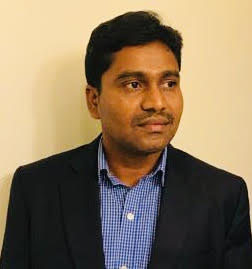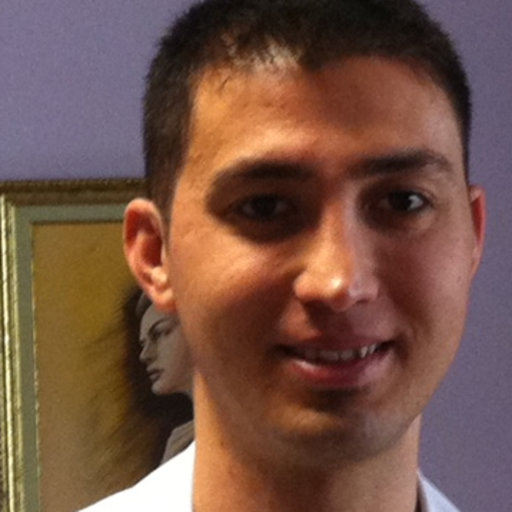Professor
Research Faculty and Staff
Post Doctoral Fellows
Bio
 Ramalinga Kuruba (Rama) received his Ph.D. in organic/medicinal chemistry from the Indian Institute of Chemical Technology, Hyderabad, India and he joined Dr. Kumta’s group at the University of Pittsburgh. Specific projects are highlighted below
Ramalinga Kuruba (Rama) received his Ph.D. in organic/medicinal chemistry from the Indian Institute of Chemical Technology, Hyderabad, India and he joined Dr. Kumta’s group at the University of Pittsburgh. Specific projects are highlighted below
He is currently involved in projects directed towards the development of new biomaterials; in particular his research focuses on the design and synthesis of chemically triggered on-demand drug delivery vehicle and potential tissue engineering. His research interests include: discovery and development of new synthetic strategies, methodologies, their application to synthesis of bioactive natural products and new chemical entities having pharmacological importance.
Rama (Kumta group) is the design and synthesis of novel organic or inorganic polymers and materials applying the principles of molecular design for bio and energy applications. Functional biomaterials find to develop new materials and methods. Modified biomaterials will interact with cells and their specific cellular functions. The chemistry of organic materials and medicine and focuses on developing chemical methods to tether peptides or modified peptides, proteins and growth factors to translationally-relevant materials. These materials include synthetic polymers, peptide and polysaccharide functionalized materials, which incorporate bio-functional species in a controlled delivery system with the goal of influencing cell response with target site.
3D printing efforts in additive manufacturing are focused on designing for patient specific solutions for tissue repair. Key to the design elements are materials that stimulate specific cellular responses at the molecular level and degrade at the rate in which the tissue is repaired. These efforts are hindered by a lack of resorbable polymer resins that are bioactive and can be designed to degrade under physiological conditions. While synthetic material advances have yielded polymers designed to elicit specific cellular functions and to direct cell-cell interactions, further advances in both synthetic methodology and scaffold fabrication are needed to drive these efforts forward. Many strategies have involved doping polymers with proteins or peptides or decorating the substrates with covalently tethered peptides that mimic the extracellular matrix or growth factors. While these approached have been demonstrated to aid the biochemical signaling and integration into host tissues, they generally reduce the mechanical properties of the material. Present biomaterials will define the use of several transnationally relevant functionalization strategies for 3D printed implantable scaffolds.
He also involved in research related to the rapid increase in bacterial infections and antimicrobial resistance, a growing public health concern. Infections arising from bacterial contamination of surgical tools, medical implants and hospital surfaces can potentially be addressed by antimicrobial polymeric coatings. The challenge in developing such polymers for in vivo use is the ability to achieve high antimicrobial efficacy while at the same time being nontoxic to human cells.
Research
Energy:
Here we study Guar gum as a binder for Si anodes and the related electrodes show excellent electrochemical performance compared with PVDF. When applied in Si/graphite composite electrodes towards practical consideration, Pure GG electrodes show stable cycling behaviour over 100 cycles while other electrodes degrade rapidly in the first few cycles.
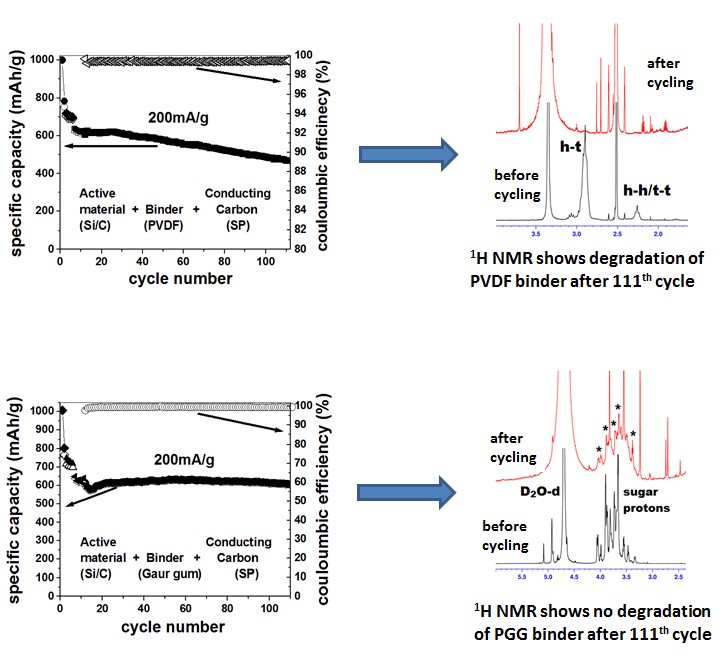
1H-NMR studies of PGG containing electrode before and after cycling has also been performed to understand the structural stability of the binder. The 1H-NMR spectra of PGG before cell cycling is shown in Fig. The broad resonances in the region δ = 3.0-4.2 ppm are due to sugar protons and a peak at δ = 4.7 ppm corresponds to the anomeric protons, overlaid by the solvent peak (D2O-d). The 1H-NMR spectra after cell cycling (Fig) shows that PGG does not degrade (peaks are marked) even after 111th cycle, which suggest that the high elastic modulus binder based on PGG can act as suitable binders in comparison to PVDF. (1H-NMR) of PGG along with PVDF before and after electrochemical cycling has been reported in this article( Journal of Power Source-2015).
Another research focuses on design, synthesis and characterization of porous polymeric systems containing ion-exchange functionality for applications in lithium sulfur battery, Lithium anode. sodium anode battery. The current project concluded with the successful identification of effective lithium-ion conducting (LIC) membrane and demonstration of the ability of LIC to shield the polysulfide species from dissolving into the electrolyte. To achieve this target, (a) Use of inorganic LICs in the form of pellet coatings, (b) fabrication of flexible polymer-sulfur wires (c) generation of gel polymer electrolyte (GPE) as an electrolyte medium (d) use of complex framework materials (CFM) as trapping agents for sulfur species. These strategies resulted in improved cycling with scope for further improvement.
Education
Ph.D Materials Science (Physics) - National Institute of Technology Tiruchirappalli, Tamilnadu, India (2011)
M. Sc. Condensed Matter Physics - Acharya Nagarjuna University, Andhra Pradesh, India (2005)
B.Sc. (Mathematics, Physics, Chemistry) - Acharya Nagarjuna University, Andhra Pradesh, India (2003)
Research Areas
Organic, inorganic, hybrid material synthesis and specialization in electrochemistry, surface science, material characterization, solid state electrolytes, semiconductor thin film deposition/coatings, nanomaterials, carbon nanotubes/graphene/graphene oxide, nanocomposites/polymers.
Contact
Mobile: +1 616 227 5503
www.linkedin.com/in/talakonda
Graduate Students

Education
Master's of Science in Mechanical Engineering from the University of Pittsburgh.
Bio
Interest and knowledge in Additive Manufacturing pertaining to Stereolithography (SLA) dealing with the different types of thermoset polymers and the methods of curing their resins. Addition work has been done with induction heating of magnetic and paramagnetic materials along with studying the use of induction heating for efficient on demand heated water delivery.
Current projects include diffusion bonding of Magnesium (Mg) and Mg alloys allowing a layering Additive Manufacturing approach in creating implants for the medical community. This combines both the advantages of Mg alloys and additive manufacturing to create a bio-compatible structure that can be custom made to suit the individual patient.
Contact
University of Pittsburgh
Swanson School of Engineering
Department of Mechanical Engineering & Materials Science
636 Benedum Hall
3700 O'Hara Street
Pittsburgh, PA 15261
Telephone: 412-624-9720

Last Degree Obtained
Bachelor of Chemical Engineering (B.Chem, 2015)
Institute of Chemical Technology, Mumbai, India
Research
The generation of clean and sustainable hydrogen (H2) via acid assisted i.e. proton exchange membrane (PEM) based water electrolysis is hitherto hailed as one of the most efficient and promising technologies. Commercial development of PEM water electrolyzer has been stymied due to requirement of highly expensive and scarce noble metal based HER/OER electro-catalysts such as Pt, RuO2, IrO2; which exhibit excellent electro-catalytic performance in PEM water electrolysis. Therefore, my current research work is focused on the identification, synthesis and development of earth abundant non-noble / ultra-low noble metal containing electro-catalyst systems with 1-D, 2-D and 3-D nanoscale architectures, exhibiting superior electrochemical performance than state-of-the art-noble metals based electro-catalysts in highly aggressive acidic media. I also investigate various dopants, support materials and morphologies to enhance the electro-catalytic activity of as-synthesized electro-catalysts. Along with experimental approach, we study theoretical first principles calculations of the total energies and electronic structures to understand the underlying mechanisms for superior electro-catalytic activity of as-synthesized electro-catalysts.
In addition, my research involves the study of semiconductor nanomaterials for photovoltaic applications, hydrogen production from photo-electrochemical (PEC) i.e. solar energy driven water splitting, electro-catalyst nanomaterials for fuel cells and alkaline water electrolysis, electro-catalytic CO2 reduction and urea production.
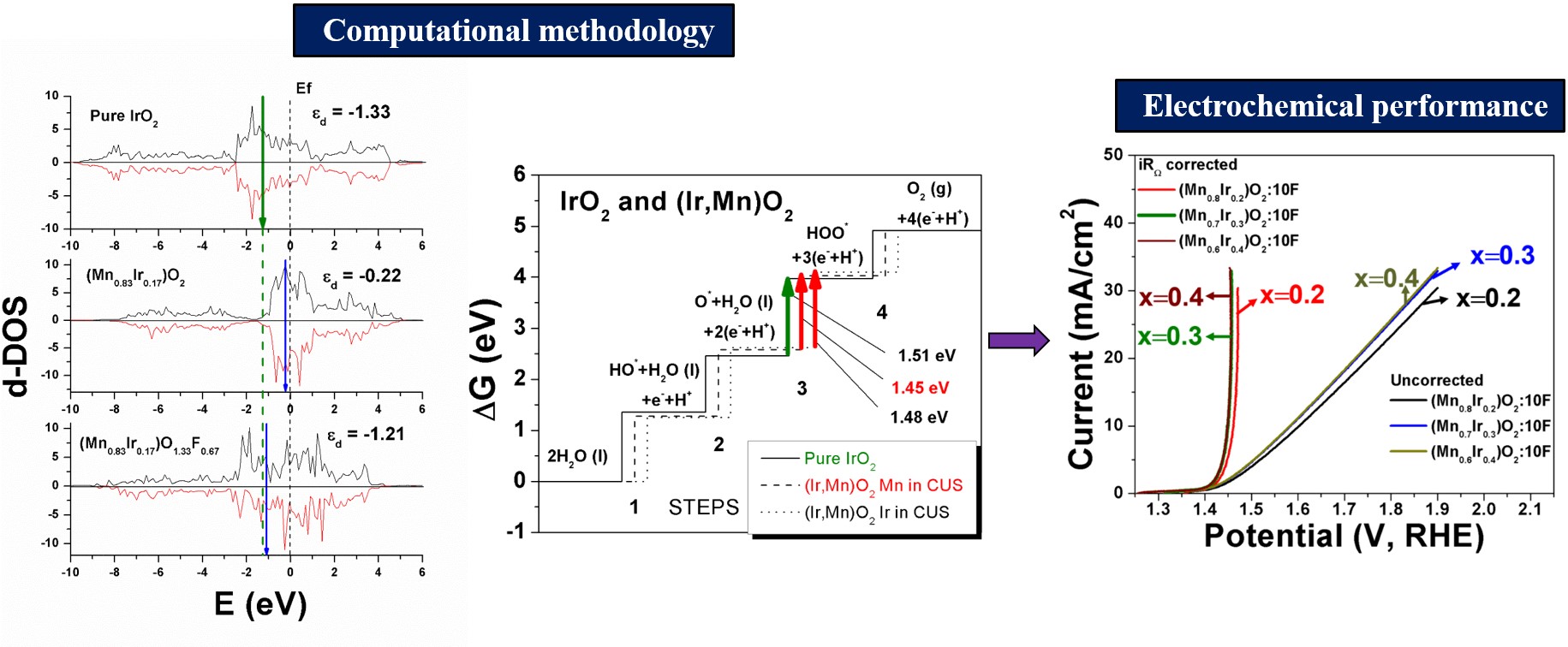
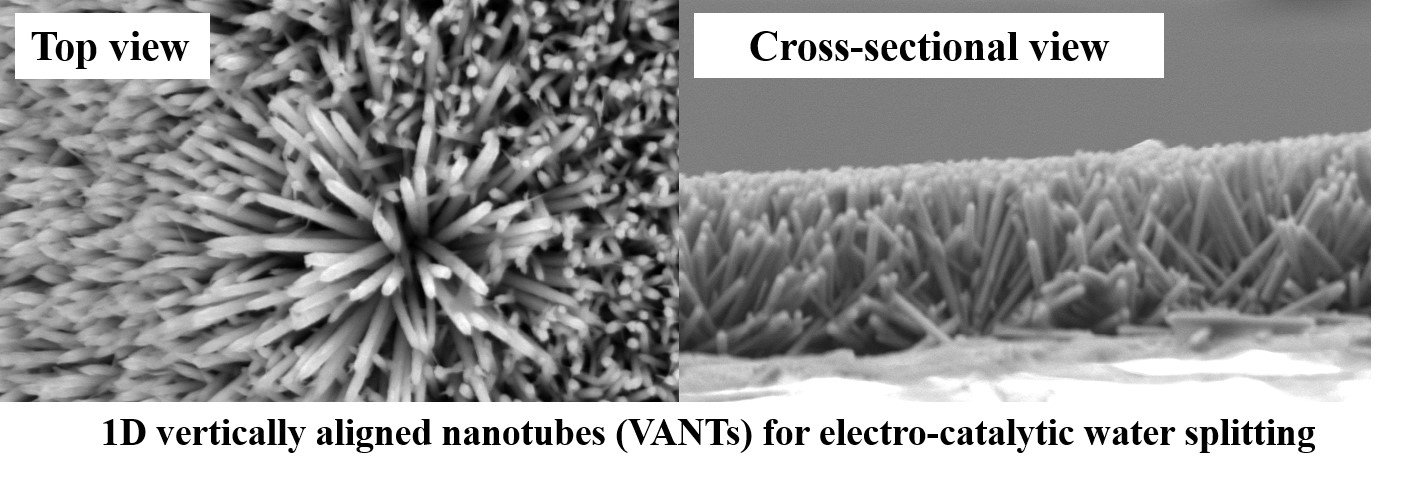
Research Papers:
https://scholar.google.co.in/citations?user=DLZgoOoAAAAJ&hl=en&oi=ao
- S. D. Ghadge, P. P. Patel, M. K. Datta, O. I. Velikokhatnyi, R. Kuruba, P. M. Shanthi, P. N. Kumta, RSC Advances 2017, 7, 17311-17324
- S. Ghadge, M. Chavan, A. Divekar, A. Vibhandik, S. Pawar, K. Marathe, Separation Science and Technology 2015, 50, 365-372.
Conference Presentations:
- S. Ghadge, P. Patel, M.K.Datta, O. Velikhokhatnyi, P. Jampani, P. Kumta, “One Dimensional (1D) Nanotubular F Doped Transition Metal Oxide Arrayed Architectures - Robust Oxygen Evolution Electrocatalyst for PEM Water Electrolysis,” ECS Spring meeting, May 2017, New Orleans, USA.
- S. Ghadge, P. Patel, M.K.Datta, O. Velikhokhatnyi, P. Jampani, P. Kumta, “Highly Active Robust F Doped Transition Metal Oxide Based Solid Solution Electro-Catalyst for Oxygen Evolution Reaction in PEM Based Water Electrolysis,”AIChE Annual meeting, November 2016, San Francisco, USA.
- S. Ghadge, P. Patel, M.K.Datta, O. Velikhokhatnyi, P. Jampani, P. Kumta, “Renewable Energy Driven Hydrogen Production From Water Splitting: Addressing Materials Challenges,” 2nd Annual Electrochemical Energy Symposium, October 2016, Carnegie Mellon University, USA.
- S. Ghadge, M. Chavan, A. Divekar, A. Vibhandik, S. Pawar and K. Marathe, “Validation of resistance in series model for application of removal of heavy metal ions from Waste-water using Micellar Enhanced Ultra filtration (MEUF)”, 6th symposium on emerging trends in Separation Science and Technology (SESTEC), February 2014, Bhabha Atomic Research Centre (BARC), Mumbai, India.
